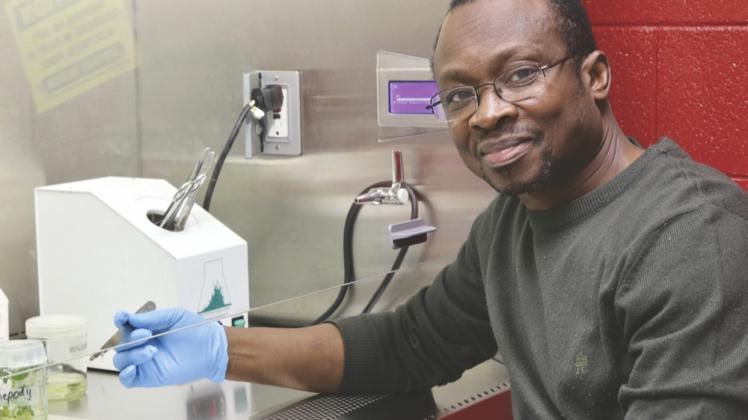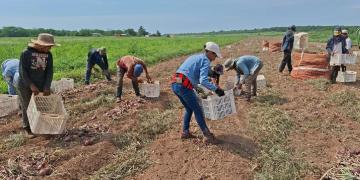Canada: Revolutionary technology shows promise in potatoes
The potential for spray-induced gene silencing seems extraordinary, but it could help with disease control in potatoes.

In February 2022, an email was circulated by Dr. Eugenia Banks of the Ontario Potato Board, about a new method for control of late blight in potatoes, called spray-induced gene silencing (SIGS). The technology has its origins in research by Dr. Aline Koch and a team of German researchers for the control of Fusarium head blight in wheat, with a report published in 2016.
“When the plant is inoculated with those strands, both the plant tissues and the disease cells will absorb the long and small RNAs,” says Fofana. “The long RNA pieces are cut to small pieces by enzymatic machineries from the plant and the fungus. Altogether, the small RNA pieces absorbed from the plant and processed inside the pathogen will go directly to interact and bind to the target gene that’s essential for their life, and then inactivate them.”
Fofana adds the RNA-based SIGS technology is simple in proof-of concept, even if work has only progressed in the lab. The key is fifinding the right target. For instance, if the goal is to have spray-induced gene silencing for late blight, it’s essential to target the gene that’s specific to the pathogenicity or life cycle of late blight.
“As long as the target gene is known and the dsRNA targeting that gene in the specified organism is sprayed on the plants, late blight reaction should be reduced through inhibited growth,” says Fofana. He notes that an elevated number of dead Colorado potato beetles should be observed if sprayed with dsRNA targeting a critical gene for its life.
“As long as you have that gene or those genes (and there may be more than one for some genes) you design a double-strand RNA targets for all of those genes together. It can be a family of genes – anything that’s essential for mitochondrial function in late blight –which is essential for providing energy to it. If you can cancel that, it will die.”
Cautious optimism
Since the targeting is so specific, development of resistance is highly dependent on the design of SIGS technology. If multiple genes required for the growth of the pathogen are targeted, the likelihood of short-term resistance will be minimal. But pathogens evolve quickly, changing the effectors to maintain their pathogenicity. It’s those core genes necessary for the pathogens’ biology that should be targeted.
When might this technology become available to growers? Fofana says it’s likely to take time – more than five years, likely closer to 10 – since it’s only at the proof of concept stage where it’s being tested in a laboratory setting. The development stage also may be costly so there’s the need to evaluate it for use, perhaps in more than one crop.
“You may see something that’s interesting, but how you get a partner who can take it for development, that’s another thing,” says Fofana. “In our case, as plant scientists, we never believe anything unless we’ve worked with it in multiple environments for multiple years. It may be efficient in the growth chamber or in the greenhouse but you still have to get out to a field to test that for multiple years and in multiple environments.”
For any new technology, the production cost may be high and transferred to the users, and at this proof of concept stage, there’s no way to predict the cost for developing SIGS in late blight or Colorado potato beetle. Fofana believes the progress for SIGS will be similar to what occurred with the mRNA COVID vaccine, where the price of the first generation of SIGS will be higher and gradually decrease if the efficacy is proven and their development is generalized by multiple suppliers for multiple diseases.
Fuente: https://www.manitobacooperator.ca/crops/revolutionary-technology-shows-promise-in-potatoes/




